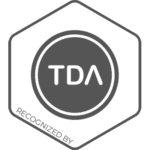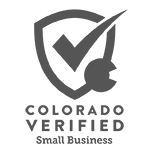Hybrid Marketing Co: Outcomes-Based Branding and Marketing for the Cannabis Industry
Trademarking in the Cannabis Space: Safeguard Your Brand as the Industry Grows
Trademark protection is essential for cannabis brands navigating a competitive, fragmented, and evolving industry.
In the cannabis industry (or any industry), trademarks are your first defense against copycats and confusion. A distinctive brand identity ensures consumers know who you are while laying the groundwork for geographic expansion, customer loyalty, and potential acquisitions.
Generic names or overly familiar symbols (ahem, bud leaves) may seem appealing, but they’re nearly impossible to protect—leaving your business exposed to risk.
Trademarking cannabis comes with unique challenges due to federal restrictions, making state registrations and creative strategies essential.
From protecting your core products to leveraging trademarks for ancillary goods like merchandise, every step strengthens your position in the marketplace. A proactive approach saves you time, money, and headaches by reducing the risk of legal disputes and allowing your business to grow confidently.
Safeguarding your trademarks isn’t just about legal compliance—it’s about securing your future in a competitive industry. Whether launching or scaling your brand, the right trademark strategy ensures your hard-earned reputation remains yours alone.
Hybrid Director of Strategy Jen Lamboy and Seth Gardenswartz of Black Garden Law discussed trademarking in the cannabis industry during a recent webinar. If you want the full power of Seth’s experience and insights, read the transcript below or watch the webinar recording above.
Transcript:
Host: Jen Lamboy, Director of Strategy, Hybrid Marketing Co.
Guests: Seth Gardenswartz, Partner at Blackgarden Law
Jen Lamboy:
Thank you, Seth, for sitting down with me. I know you’re a busy man in the cannabis space, so I’m glad that we can sit down together and have a conversation about trademarking in the cannabis space.
We’re going to be talking about protecting your brand, launching a brand without really shooting yourself in the foot. So much of this space is, of course, we often talk about revenue, risk, cost, cash flow, and asset utilization here at Hybrid Marketing. Part of that conversation is always risk.
I’m Jen Lamboy, I’m the Director of Strategy for Hybrid. I am joined today by Seth, one of my dear colleagues and friends, Seth Gardenswartz of Black Garden Law.
We’re going to talk about trademarking. We’re going to dig in. Also, just to kind of set a little bit of housekeeping, if you have questions throughout this webinar, there’s a Q&A function. If you look at the bottom of the doc, go ahead and hit the Q&A, add your questions there, and I will very politely and kindly interrupt Seth to get to those questions as well.
Thanks, Seth. Jump in there and give us a little bit more background about you.
Seth Gardenswartz:
Thanks, Jen. It’s a pleasure to be here with you. So I often describe myself as a marketing and branding guy who went to law school, not someone who came out of law school and became a technician and then learned a little bit about this.
I started my career working in a retail business way before I went to law school. I worked in the recreation space, and we resold goods from Patagonia, Nike, Oakley, and all these big brands. It gave me an insider appreciation—like many of you on this call—of what it means to build a brand, what brand equity gives you in terms of pricing power, market penetration, and things like that.
When I went to law school, my interest in technology and intellectual property was just augmented. So I found my way back to the IP space. Today, I co-founded a law firm with my law partner, who is a corporate and securities attorney.
We work with businesses nationally on IP protection, particularly brand and related IP. We also have a robust corporate practice for finance, securities, equity, M&A, and some other related things.
We like industries that we know well. So cannabis is something we got into because it’s very similar to tech in that you can’t borrow money from traditional lenders to do either thing—to write software or to grow weed. So it was a very natural fit for us.
I’ve really enjoyed the industry, and I like the people. That’s a quick thing about me. I am a native of Albuquerque, so there’s a couple Saul Goodman references in here. I hope everyone gets them. If not, I’m happy to explain.
Jen Lamboy:
Yeah, awesome. Cool. Okay, so I want to start off first. I’ll ask the maybe dumb and obvious question: what really is a trademark, and why do we care?
Seth Gardenswartz:
That’s a good question, and it’s actually a pretty old question. So why do we have them, and why do we have this sort of federal and state legal framework for trademarks?
Let’s start by saying this is not a new problem or a new issue. These are merchant marks from medieval England. These are what a lot of people would call maker marks. One interesting thing about them you might notice compared to a modern trademark—like the little Hybrid logo on the lower left—is that something is missing from most of these marks that we don’t see.
Do you know what it is, Jen? Can you identify what’s not in these images that’s on your Hybrid logo at the bottom?
Jen Lamboy:
Words.
Seth Gardenswartz:
Right, exactly. Because most people couldn’t read. The important thing about these marks is that merchants would put them on their goods so people would know where they came from.
If I’m having coffee or grog at Jen’s house and I’m like, “Oh, this is a really nice mug. Jen, where’d you get this?” you could point to the maker’s mark and go, “Oh, this is Mark,” and he’s got the little four flags with the cross in the circle.
So if I went back to the market, I could look for that mark and know whose goods I was getting. Why would I do this? Because I knew it was quality, and I wanted to get that again.
We have marks so we can uniquely identify the source of goods. The reason we have a legal structure for this, that we give someone a property right (the “P” in “IP” stands for property), is so someone else can’t just take the same maker’s mark and put it on their goods, free-riding on the great reputation that the first person built.
That’s why we have trademarks and why they’re important. Intuitively, this gives you pricing power.
For example, if you walk into a sporting goods store needing soccer cleats, there will be all kinds of cleats. But if they’ve got three stripes on them, you might think, “I don’t know much about cleats, but I know that company has been making shoes for a long time and has a good reputation. I might be willing to pay a little more for those.”
Jen Lamboy:
Well, and I think it’s most relevant in cannabis because when we think about the marks that we’ve seen most common… so of course, as a marketing agency, we see folks who are in the very beginning stages of building their brand. Oftentimes they want to do a green plus, they want to do a cannabis leaf, they want to even have the word “leaf” somewhere in their name.
We have seen over the last, gosh, 10 years—we’ve been in the space since 2015, but some of the folks on our team have been in the space since 2011—how what is popular changes. You see trends within certain time periods, and then what’s been popular across the whole industry since adult use became, you know, more mature.
Seth Gardenswartz:
Yeah, “mature” is a good word. You’re describing perfectly the natural migration from a nascent market to a more mature market. When people get started in a new market, they think, “Oh, I want my name to say exactly what I do. I want it to convey exactly the goods or services we sell.”
But if you look back at that previous slide… oh yeah, none of those marks do that, right? Those marks are just a mark. And each mark is different enough from the others that you’re not going to easily confuse whose they are.
So when you look at those, you know, the continuum, what that shows is, on the lower left-hand side, marks that are generic—they don’t communicate anything unique about the goods. They’re just…
So there’s a can of beer from Repo Man, if you recognize that. That was from the generic food products that were actually manufactured by Ralph’s or manufactured for Ralph’s back in the ‘80s. But you can’t really… if it’s just a can that says “beer” on it, you don’t know whose beer it is, right? It’s just… it’s very generic beer.
So it’s got no distinctiveness to it. What that means is you can’t distinguish yourself. It’d be like calling yourself “Weed” or calling yourself “Cannabis” or “The Cannabis Company.” No, that’s not who you are. You are Lamboy’s Cannabis Company. Lamboy is distinct.
People—and I promise you this—if you’re in business for more than a year, people will stop saying “Cannabis Company.” They’ll just say, “I went to Lamboy,” right? They just drop that.
If you look at this continuum, you’ve got generic marks. These are weak and unprotectable—don’t even bother trying to protect these marks or assert any kind of exclusivity on them.
Then you’ve got descriptive marks. This is where a lot of people think they’re going to get some protection, and they don’t. Marks that are sort of famous in that space are like American Airlines. Well, this is an airline based in the United States of America. So it’s highly descriptive.
It’s a registered trademark—how, you might ask? Well, first of all, they’ve been around for 70 years. So they’ve got something called secondary meaning. When you say “American Airlines” now, you don’t think of, “Could that be Southwest? Could that be United?” No, you think of that one.
The other thing is, it’s expensive to build an airline. You can’t just go do it. It’s even more expensive than starting a cannabis company. So there aren’t that many of them, so there’s not a lot of confusion in the space.
As you go up from there, you’ve got suggestive marks like Java Joe’s and Burger King. These are marks that have developed secondary meaning but would be harder to protect.
If I were advising a new client, I’d say, “Let’s try to find a way to make this mark a little more distinctive. You can always add the descriptive element after your distinct thing.”
Starbucks is a good example. It’s what we call an arbitrary mark. These are words that exist in the English language. “Starbucks” comes from that beautiful library behind you—trivia question, does anybody know where the word “Starbucks” comes from? Anyone on the call?
Jen Lamboy:
I won’t guess.
Seth Gardenswartz:
It’s the first mate in Moby Dick. So this is an arbitrary mark. It’s got nothing to do with coffee, but it’s a word. Like Apple—nothing to do with computers, but it’s a word.
Because it’s got nothing to do with the goods or services, it’s distinctive. Starbucks originally was Starbucks Coffee Company—the big long word mark—but they dropped that. They dropped Coffee Company eventually.
The siren logo is quite… in fact, that mark is on your screen. I made this slide a year or two ago, but they’ve updated their logo since then slightly. It’s still the same color; it’s still a siren.
But the point is, it’s become very distinctive for that product and service. You don’t have to say, “Get me a Starbucks coffee.” You can just say, “I want a Starbucks,” and everyone knows what you mean.
Jen Lamboy:
Exactly.
Seth Gardenswartz:
You don’t have to explain further.
Jen Lamboy:
From a branding perspective, and maybe more through a marketing lens, when you’re first coming out, we see all the time the need to refresh a brand. Maybe you start off with something—hopefully not a plus sign or a pot leaf—we don’t even suggest considering that.
But a brand refresh is something we can help with. As far as building the bones of what you’re launching, you also want to mitigate as much risk as possible.
When you’re talking about protecting your brand but also reducing confusion, you don’t want to be confused with the big guys who will quickly send you a cease-and-desist letter. You also want to understand that while some brands evolve, what you want to do is prevent stepping into more risk than you need to.
If you’re new to the space, you’ll quickly learn that, like most of us who’ve been in it, the challenges force us to be resilient and creative. The points Seth is making are about avoiding larger time, financial, and resource costs down the road.
Seth Gardenswartz:
Absolutely. If you can avoid making a mistake that’s highly avoidable—like in this situation—these are all avoidable when you’re starting a business. You just need to do a little bit of homework.
You also have to check your ego or emotional attachment because no one else is attached to your name before your launch. Any brand value your name has comes from what you do, not the name itself. It comes from the association with that name.
Kodak meant nothing when it started. Starbucks meant nothing to coffee when it started. It was a literary reference. But now, it’s got tremendous value because it’s so distinct and unusual. Green wasn’t even a commonly used color for coffee branding back in the ‘70s when Schultz got this idea to scale out a coffee roastery.
There’s a quote by a well-known tech entrepreneur: “The emotional attachment you have to your initial name is your attachment. It’s no one else’s attachment until you do something with it.”
Jen Lamboy:
Right, right. That’s such a good point.
Seth Gardenswartz:
This slide—yeah, I made this one, so it’s a little boring compared to yours, Jen. (Laughs)
The last slide we talked about—the continuum—is one of the two reasons most people make mistakes when choosing a protectable brand and why they’re likely to be denied registration by any state or federal trademark office.
The first is descriptiveness—the mark is too descriptive.
The second is that it’s too similar to someone else’s mark. When I say “someone else’s,” it’s usually a prior filed mark. Trademark nerds like me call those senior users—not because they’re old, but because they’re ahead in time.
What the Lanham Act says, which makes sense, is that no one is going to let you register a trademark that is so close to another mark that a potential consumer could be confused or mistaken about whose it is.
It doesn’t have to be exact; it just means the consumer is likely to be confused.
Jen Lamboy:
Right.
Seth Gardenswartz:
That’s not a bright-line standard. Some of the key factors are:
- How similar the marks are—they don’t have to be identical.
- How related the goods and services are.
A great example is Delta—Delta Dental, Delta Airlines, and Delta Faucets. These are all registered trademarks owned by large companies.
How can they exist if the marks are essentially identical? Simple: These are super different goods and services.
You don’t walk into Lowe’s and think, “Cool, my dental plan is making toilets now.” These things travel in different channels of trade, are sold at different prices, and target different consumers.
When people see Delta on their toilet, they don’t think “Delta Airlines” or “Delta Dental.” Even on an airplane, you don’t assume Delta Airlines makes its own toilets.
This is where people make mistakes. They’ll say, “I have a great name, I searched it, and it’s available.” But when someone does research that isn’t their expertise and finds exactly what they were looking for—it’s probably wrong.
Jen Lamboy:
(Laughs) Oh, that’s such a good point.
Seth Gardenswartz:
The test is whether the mark is close enough that a consumer could reasonably be confused. That’s it.
There’s a famous case with DuPont that enumerates 13 factors to analyze this, but the most important ones are:
- Similarity of the mark.
- Similarity of the goods or services.
Other factors include channels of trade, average price, and even things like foreign language equivalents. For instance, “kitchen” and “cocina” are treated as the same under trademark law.
Jen Lamboy:
Wow.
Seth Gardenswartz:
Yeah. If you’re Mile High Cannabis, the trademark examiner knows Denver is the Mile High City.
Jen Lamboy:
I’ve got a question there because I know the industry is still fairly small. Within the space itself, if you’re a dispensary and there’s another company with a similar name but they do something different, like manufacturing, there could still be consumer confusion. Is that correct?
Seth Gardenswartz:
That’s absolutely correct. For example, if one company is a dispensary and another manufactures edibles, there’s still likely to be confusion, especially if the dispensary puts its brand on products.
Jen Lamboy:
Yeah, that’s what we see.
Seth Gardenswartz:
The geographic separation can sometimes help, but cannabis brands cross state lines much faster than the actual products do. Consumers encounter brands when they travel and remember them, which builds what I call brand momentum.
Jen Lamboy:
Absolutely.
Seth Gardenswartz:
When a state like Arizona legalizes adult use, those brands that consumers already recognize have immediate pricing power.
Jen Lamboy:
Yes. That’s what I tell clients when we discuss objectives, whether it’s to grow revenue or prepare for acquisition. Building a strong brand early is so important.
Seth Gardenswartz:
That prep work to get to that point doesn’t start in year three when you’re ready to get acquired. You have to do the legwork from the very beginning.
Think strategically about your intellectual property. If you’re selling a cannabis brand—let’s say a regional brand to a larger company—you have to ask yourself, What are you really selling that the buyer doesn’t already have?
Jen Lamboy:
Exactly.
Seth Gardenswartz:
What are you selling that’s unique? People often picture stuff—fixtures, lights, manufacturing equipment, maybe a leasehold interest—but really, the buyer is purchasing your customers.
What they’re buying is the fact that your customers keep coming back. That’s brand. It’s the brand promise that keeps people buying the same edible, cartridge, or pack of IPA.
A larger company could reverse-engineer your product, but they can’t manufacture that brand relationship you’ve built with your customers. That’s the most valuable part of your business.
Jen Lamboy:
That’s such an important point, and it ties directly into the idea of planning ahead. I often ask clients, “Who do you want to be when you grow up?” because that should inform how you build your brand from the beginning.
Seth Gardenswartz:
Exactly. And in cannabis, this is especially critical because the space is so volatile.
Take beverages, for example. CANN has done a great job building a recognizable brand. They plant their brand in non-THC beverages in states that aren’t yet legal. That way, when those states do legalize, they already have brand recognition.
Jen Lamboy:
Yes, exactly. And on the dispensary side, New Jersey is a great example. There are restrictions on how many stores you can open, so brands have to think strategically.
If you don’t build a strong brand early, you’ll run into challenges when you expand to a neighboring state like New York. Suddenly, you’re competing with dozens of other dispensaries with similar names.
Seth Gardenswartz:
Right. And that’s why it’s important to think about your end game early. You wouldn’t build a house on land where you only have a one-year lease.
If your business is successful, your brand will likely be your most powerful asset. The largest cannabis producers out there don’t just sell products; they sell brand equity, which allows them to scale faster and build consistency across markets.
Jen Lamboy:
It’s all about building that brand promise and setting yourself up for long-term success.
Seth Gardenswartz:
Absolutely. Now, let’s quickly touch on some myths we encounter all the time.
People will say, “I own my name because I registered it with the Secretary of State.” But that’s not owning your name. Nike was still legally Blue Ribbon Sports for decades. Registering your name with the Secretary of State is just an administrative formality.
The same goes for domains. Registering a domain is not the same as owning trademark rights.
And let’s talk about logos. If you register a logo, keep in mind that logos often change over time. If you update your logo, you’ll need to file a new trademark application.
Jen Lamboy:
That’s a great point. I was going to ask about that.
Seth Gardenswartz:
Stick to a core logo—the one you use most often. And if you’re filing a word mark, focus on the plain text version of the name. That gives you broader protection.
Also, remember: You don’t get trademark rights until you use the mark in commerce. You can’t just print it on a business card or create a PDF. You need to actually use it in a way that reaches consumers—like on invoices, ads, or signage.
Jen Lamboy:
That’s so important, especially in cannabis, where compliance is critical.
Seth Gardenswartz:
Exactly. One more thing: The ® symbol is for federally registered marks. If you’re not federally registered, use ™ instead. Using the ® without registration can get you into trouble.
Jen Lamboy:
Got it. Let’s dive into your considerations for choosing or auditing a mark.
Seth Gardenswartz:
This table outlines a DIY approach for evaluating potential marks:
- Search for conflicts: Look at vertical sites, regional databases, and the USPTO’s TESS database.
- Evaluate distinctiveness: Is your mark descriptive or distinctive?
- Assess risk: How close are similar marks? Who owns them—small businesses or major MSOs?
If you encounter conflicts, start over or consider coexistence agreements.
Jen Lamboy:
That’s such a practical framework.
Seth Gardenswartz:
Thanks. Now, let’s talk about state and federal issues. You can’t get trademark protection unless you’re using the mark legally in commerce.
For cannabis brands, that often means starting with state trademarks. In Colorado, for example, we file state trademarks weekly for cannabis clients.
Federal registration is trickier. While you can’t federally register marks for THC products, you can register for non-THC products like CBD or merchandise.
Jen Lamboy:
It reminds me of Cookies. Their merch strategy is genius. By selling apparel under a non-cannabis brand, they avoid marketing restrictions.
Seth Gardenswartz:
Exactly. And the brand recognition from their merchandise builds momentum for their cannabis products.
Jen Lamboy:
It’s all about building that lifestyle brand. And that ties back to knowing your audience.
Seth Gardenswartz:
Right. If you try to target everyone, you’ll end up targeting no one.
Jen Lamboy:
Agreed. And it’s also about setting expectations early.
Seth, I want to be respectful of your time. Is there anything we missed?
Seth Gardenswartz:
I think we covered everything—from state and federal issues to the importance of setting your ego aside when building a brand.
Jen Lamboy:
Absolutely. Seth, thank you so much for your time and insights. This has been incredibly valuable.
Seth Gardenswartz:
My pleasure, Jen. I look forward to part two. There’s so much more we can dive into—like metrics and valuation.
Jen Lamboy:
Yes, let’s do it! Thank you again.
Seth Gardenswartz:
Thank you. Take care.
Jen Lamboy:
Take care, everyone.









